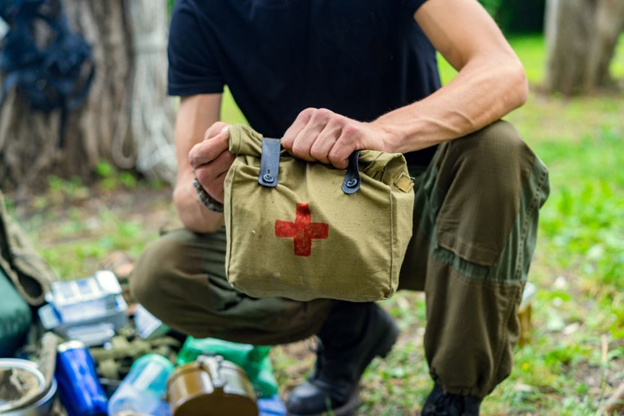These need to be in every household, every workplace, every school, every hiking backpack, and every emergency home and auto kits. Yet in most cases, it is greatly lacking. What are we talking about? A First Aid Kit.
A properly equipped first aid kit should cover more than the occasional boo-boos. Here are some examples that can occur anytime, anywhere:
- Your 14 year old is taking a test in school, has a major paper cut and has no time to see the school nurse.
- You witnessed a major car accident and you can render assistance until the paramedics came?
- Minding your own business at work, a disgruntle client starts shooting, A bullet grazes your leg and you have heavy bleeding.
- You are hiking and you get bit by a poisonous snake.
- While riding the subway to work. You hear an argument and someone is bleeding from a stab wound.
- After a major hurricane, your car is under a fallen tree. You cut yourself with the machete trying to clear out the tree and bleeding heavily.
- Your are home sick with covid. Your tooth cracks and no dentist will see you.
Seeing the bigger picture?
How Many First Aid Kits Do You Need?
Life in unpredictable. Life does not make appointments with accidents. Having a first aid kit in multiple locations can take care of most accidents. It may seem daunting and expensive to have multiple first aid kits. But start small and build your supplies and budget allows.
- Home -one for the home and one in your bug out bag
- Car -get home bag
- Office –
- School bag
- Hiking backpack
- Every day carry bag

How Big Should The First Aid Kit Be?
The answer is -it depends.
How many are in your family? Are you planning for the “now” or long-term SHTF situation? First aid kits come in all shapes and sizes. It should have sufficient supplies to prevent further injury and reduce the risk of infections.
Buy Pre-Filled Kit or Build?
A pre-filled first aid kit has its conveniences, but they are not one-size fits all. A pre-fill kit may make sense for minor scrapes and burns. Your home or car kit may need additional supplies to cover more serious injuries.
First Aid Kit Supplies Checklist
Whether you are buying a pre-filled kit or building one, here is a list of what you should have:
- Antiseptic or alcohol wipes
- Antibacterial ointment
- Assorted adhesive bandages
- Butterfly bandages
- Gauze pads -various sizes
- Rolled gauze
- Medical adhesive
- Pain relief medication
- Allergy relief medications
- Tweezers
- Safety pins
- Splinters
- Medical gloves
- Thermometer
- Burn gels
- Tourniquets
- Permanent market for writing time on the tourniquets
- Trauma scissors
- Hemostatic dressing
- Open chest seal
- Emergency thermal blankets
- Israeli type compression bandage
- Over the counter and prescription medications: to manage stomach aches, diarrhea, constipation, cough, fevers, pain, allergies
- Snake bite kit
- Emergency tooth repair kit
- First aid bag
- Molle first aid bag -for smaller kits
You Have a First Aid Kit – Now What?
You have a first aid kit? That’s great! Do you know how to use the supplies in an emergency?
It is important to be familiar with basic first aid procedures, CPR and how to treat trauma injuries. There are a variety of in-person and online first aid courses available to help you to prepare and respond to common emergencies.
We may receive commissions when you click our links and make purchases. However, this does not impact our reviews and comparisons. We try our best to keep things fair and balanced, in order to help you make the best choice for you.
For more information in building your first aid kit, here is some helpful information from Ready.gov.
In conclusion
Let’s face it, accidents could happen any place at any time. Of course, there’s the possibility that you will never have to use your first aid kit. But, if you own a first aid kit you will have peace of mind knowing you’re prepared for any possible accident or injury.

